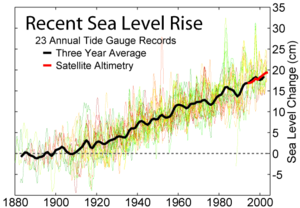Innovyze, a leading global innovator of business analytics software and technologies for wet infrastructure, today announced that the Samoa Water Authority (SWA) has chosen Innovyze industry-leading H2OMAP Water and InfoWorks CS software for water distribution and sewer collection modeling and design of the Samoan network. The selection further substantiates Innovyze’s leadership position in geospatial hydraulic infrastructure modeling and management across the globe.
Established in September of 1993, the SWA is the national supplier of water services to Samoa’s 180,000 citizens. The authority manages five conventional slow-sand filter water treatment plants and five newer rapid-sand filtration package treatment plants. All treated supplies are chlorinated to comply with the Samoa National Drinking Water Standards. Customers served by these treatment plants enjoy safe, quality water on a 24-hour basis if the supply is sufficient. Customers whose water is drawn from springs and river intakes also receive a constant supply, but the water is untreated and not disinfected. Customers served by wells receive intermittent supply determined by the pumping hours of their specific well.
H2OMAP Water is a powerful and practical geographic information system (GIS) platform for water utility solutions. As a stand-alone GIS-based program, it combines spatial analysis tools and mapping functions with sophisticated and accurate network modeling for complete infrastructure management and business planning.
H2OMAP Water performs fast, reliable, and comprehensive hydraulic and dynamic water quality modeling, energy management (with true variable speed pumping), real-time simulation and control with online supervisory control and data acquisition (SCADA) interface, and complete fire flow and carbon footprint analyses.
“The
H2OMAP Water and
InfoWorks CS software was recommended by key designers whom undertook the Authority’s Water Supply and Sanitation master plan. SWA used other software packages previously, but these were superseded or suspended due to incompatibility with existing GIS software. Innovyze solutions were selected as they can incorporate Epanet, Mapinfo (GIS) data and AutoCad,” said
Tafeamalii Philip Kerslake, Technical Manager of SWA. “Using their advanced hydraulic modeling applications will allow us to troubleshoot our complex problem areas and allow us to evaluate different operating scenarios — ultimately leading to a more efficient system and better customer service.”
H2OMAP Water fully supports geocoding and multiple mapping layers, which can be imported from one of many data sources including computer-aided design (CAD) drawings (e.g., dwg, dgn, dxf); CAD world files; standard GIS formats (Shapefiles, MID/MIF files, and ArcInfo coverages); Vector Product Format (vpf) files; Spatial Database Engine (ArcSDE) layers; attribute tables; grid data; image files; open database connectivity (ODBC); and Comma Separated/Delimited Text (CSV) files. The program also supports the geodatabase standard of ArcGIS through an ArcSDE connection.
InfoWorks CS provides wastewater utilities with a uniquely effective tool for undertaking hydrological modeling of the complete urban water cycle. Essential for identifying and justifying cost-effective infrastructure improvements,
InfoWorks CS also offers a practical method for operational control (including real-time control) of the sewer network. Other applications include urban flooding and pollution prediction and the modeling of water quality and sediment transport throughout the network.
In addition to supporting fast and accurate network modeling,
InfoWorks CS features specific tools to support the modeling of subcatchment takeoff and infiltration. With its exceptionally fast and robust simulations, the software facilitates the swift modeling of total networks or any subnetwork.
“The adoption rate of Innovyze technology across the industry reflects a powerful trend among water and wastewater utilities toward our products,” said Andrew Brown, Innovyze Director of International Operations. “The shift is being driven by a range of compelling advances, including speed; brevity of learning curve; dynamic, comprehensive feature sets; and superior technical support. We are pleased to see the Samoan Water Authority and other progressive utilities continue to expand their commitment to using world-class software tools to benefit their customers.”





